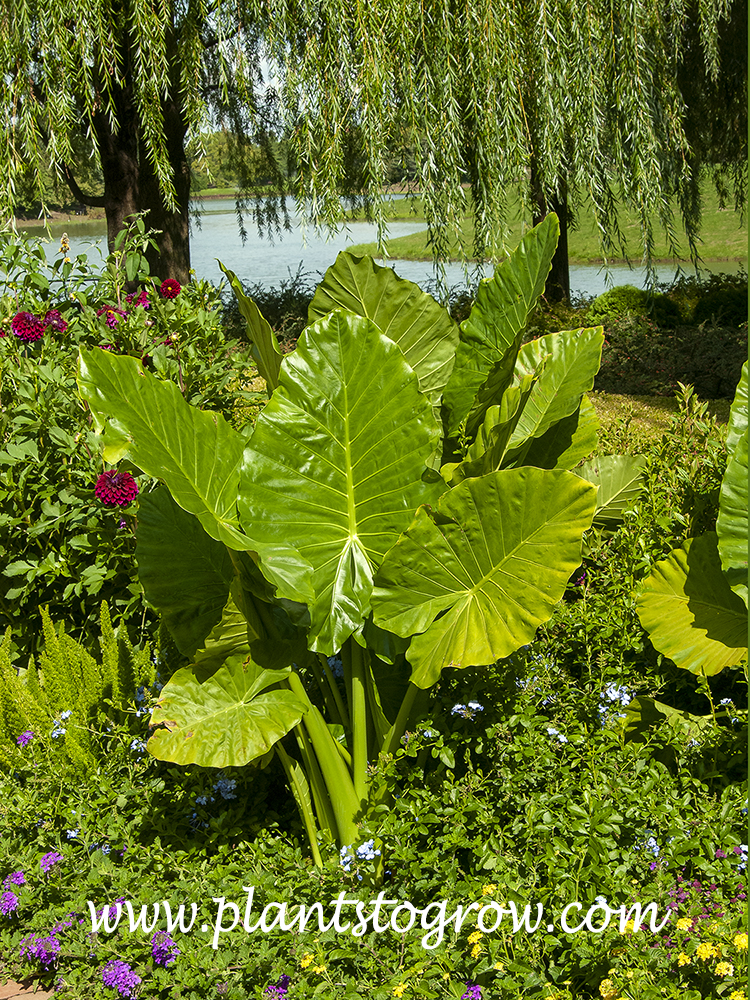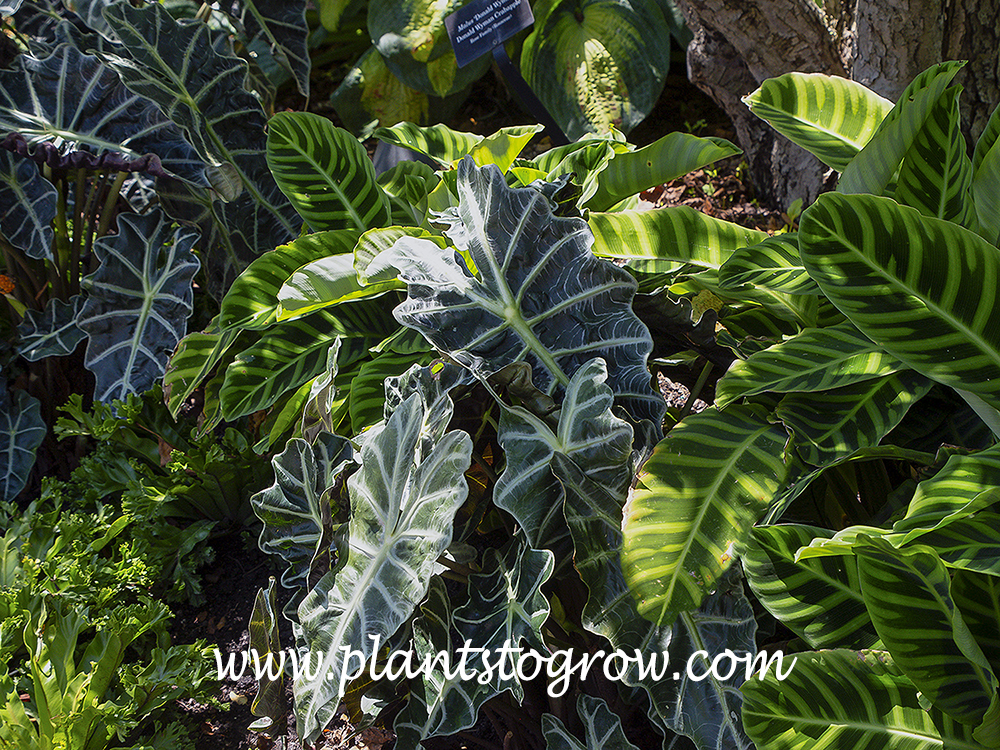| Description | Elephant Ears ABC's (Alocasia) A group of large growing tropical plants with bold leaves. Can be grown as a landscape plant in zones 10-11 or has an indoor plant in colder plants after they have been growing outdoors during the summer. Most need warm temperatures and higher humidity. |
|---|---|
| Pronunciation | (al-oh-KAY-See ah) or (a-loh-KAY-see-uh) |
| Plant Type | Indoor Foliage, Bulbs, corms, tubers, rhizoms, etc., Perennial Tender, Site author's observations, Tropical herbaceous plants |
| Hardiness Zone | (9)10-12 |
| Sunlight | full, bright, mostly sunny, partial shade, this can vary between cultivars and species, in zone #5 where I live they can easily tolerate full sun |
| Moisture | moist likes high humidity |
| Soil & Site | moist, well-drained |
| Growing Media | moist, well-drained |
| Temperature | warm |
| Flowers | spath with a slender spadix |
| Leaves | Leaves are the sought-after feature of these plants and can become very large. Color can be different shades of green, many times with colorful prominent veins, Can have wavy edges and rounded serrations. Usually, a large arrow or shield-shaped. |
| Stems | tubers, rhizomes |
| Dimensions | can be 2-3 feet to over 7 feet depending on the growing region |
| Maintenance | The plants may go dormant when brought indoors from the outside or during the winter when grown outdoors in zones (9)10-11. Cut way down on the watering until the start to regrow. Will probably lose most if not all of their leaves. Rhizome or bulbs can be overwintered. |
| Propagation | division |
| Native Site | indigenous to southeast Asia. |
| Misc Facts | Alocasia leaves and stems contain oxalic acid. This is a toxin in the form of sharp crystals which can cause severe swelling in the mouth, throat, and lips. Toxic to pets and humans. Can also burn the skin on contact. This is the same toxin that is found in the popular indoor plant Dumb Cane (Dieffenbachia) |
| Author's Notes | I have bought bulbs and overwintered ones I have grown during the summer (zone #5). The key to me is to get them started indoors and keep warm. I have brought them out too early and they slow down, almost shut down. It takes time for them to recover and start growing. Probably late May to early June before taking them outdoors in my zone which is #5. Can be taken out during the warm day and brought indoors at night. |
| Notes & Reference | #51-Armitage's Manual of Annuals, Biennials, and Half-Hardy Perennials (Alan Armitage), #255-Encyclopedia of Exotic Plants (Will Giles), #269-Floridata (https://floridata.com/home), #267-Brians Botanicals (http://briansbotanicals.net), #268-Ariodia Research (Aroidiaresearch.org/), #271- Wholesale Aroids (www.elephantearsplants.com) |

Cart


